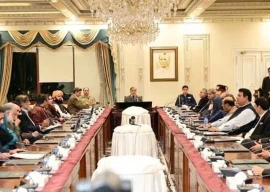
Once the ‘Lion River’ emerges from the lap of the earth, it cuts through the world’s highest mountains, forming gorges which appear to be insurmountable until a closer look at the terrain reveals the many paths that crisscross the treacherous surfaces of the mountains. These are the many ancient routes which connected Central Asia with China and India. Since pre-historic times, the course that the river took cut passages into the immense granite rock formations, providing routes that have been traversed by humans: hunters and the hunted, slaves and slave-drivers, traders, pilgrims, missionaries, and, in the colonial era, researchers and scholars working in the interest of Imperial Britain.
Along these delicately etched trails, zigzagging lines from the window of an airplane, lie thousands of petroglyphs, testimony to human endeavour over millennia stretching back to the Middle Stone Age. Today, the Indus at Badin in Sindh is not even a shadow of itself. A bed of sand, it is a terrible testament to the depleting resources our country is faced with as we brace ourselves for the kind of hunger which gnaws at the gut. Further downstream, at Keti Bandar, where the Indus flows into the Arabian Sea, the virtual absence of vegetation and the low density of human settlement are evidence of the degradation that the ecology of this delta has witnessed.
The incursion of saline waters has devastated agricultural production, and drinking water has to be trucked in, or sucked out from deep wells dug by the desperate. What happened to the Lion River, the Indus, Sindhu, the life-force of ancient civilisations and contemporary Pakistan? What happened to the vast forests which covered a quarter of the landscape of our beloved country? What happened to the produce which was harvested from the rich soil of our homeland? Why are our cities dark, our canals polluted, the earth encrusted with salt, the hills bare of trees? Where has the promise gone?
And who banished our future to some unlit space where it cowers like a wounded animal? So many questions which need to be addressed, so many accounts which need to be settled. Where does one start? With the greed which has depleted our treasury, or the waste which bled our granary, or the ignorance which fed patriarchy, forcing women to become bearers of future generations cursed with negligible futures? Is it too late for us to rectify the many wrongs that have been done to the nation? Can we take a first step now? TO BE CONTINUED





































-(1)1714378140-0/AliAminMaryam-(4)-(1)1714378140-0-270x192.webp)

1714370039-0/ojwilson-(1)1714370039-0-270x192.webp)







COMMENTS (1)
Comments are moderated and generally will be posted if they are on-topic and not abusive.
For more information, please see our Comments FAQ